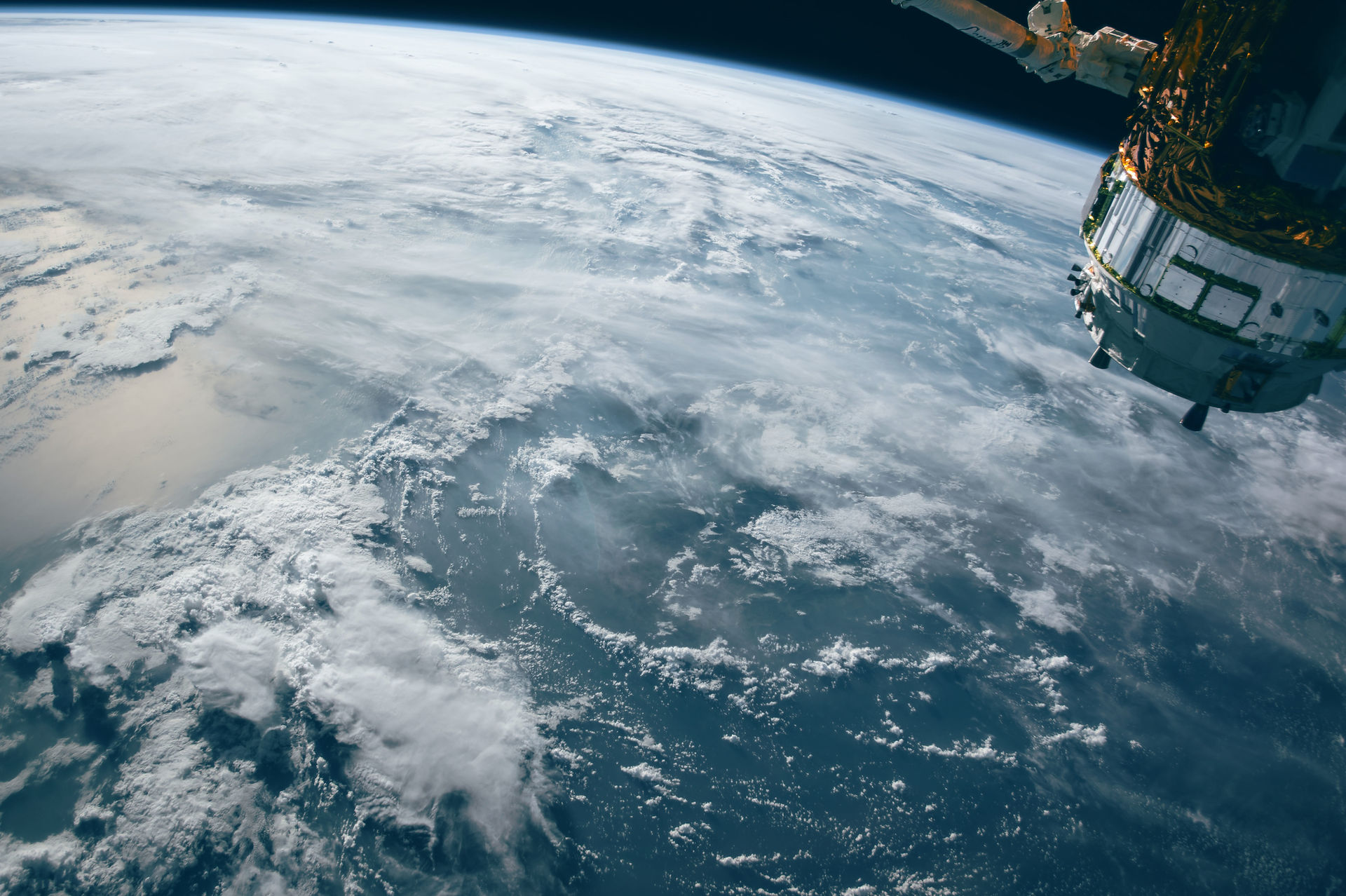
Rockets and Forces
Forces can very simply be defined as a push or a pull acting on an object. A more complex definition would state that forces are vector quantities that show the direction and magnitude of a push or pull acting on an object. Either way, forces act on all objects, and rockets are not exempt from this. In fact, rockets are arguably one of the objects that is most affected by forces. Rockets mainly deal with four forces; weight, thrust, lift and drag. Lift and drag are two examples of aerodynamic forces. An aerodynamic force is a force that acts on an object that passes through a fluid. A fluid can be either a liquid or a gas, like air and water. The center of pressure, which is the yellow circle with the black dot on the image, is the average location that the aerodynamic forces act on. The center of gravity, which is just the yellow circle on the image, is the average location that the gravitational force acts on. All of these points and forces affect the rocket's journey in some way, which is what makes the flight of a rocket so unique.

WEIGHT
Weight can be defined as the force of gravity on the mass of the object. Weight is calculated by simply multiplying the mass of the object and the acceleration of gravity. Therefore, many times weight can be seen to be described as w=mg, which is mass times acceleration of gravity. Also, from this, it can be proven that weight is a force, because the force equation is similarly mass times acceleration. Weight always pulls an object downward, and weight is the biggest force that a rocket has to overcome. Weight acts only on a singular point on an object, which is known as the center of gravity. As can be seen in the image below, weight is the red arrow pointing downwards, and the yellow dot in the middle is the center of gravity. Weight is dependent on the gravitational field, making weight a field force. This means that weight is one of the most unique forces out of the four, as the others are mechanical forces while weight is a field force.

THRUST
Thrust is the push force of the rocket. Thrust is created by the rocket to counteract the forces of drag and weight, which allows the rocket to be lifted off the ground and up into space. Thrust is a perfect description of Newton's third law of motion. The law states that every action has an equal and opposite reaction. Similarly, in a rocket, fuel is combusted, and it creates a working fluid that is expelled out of the bottom of the rocket. That is the action. The reaction is that an upward thrust force is created, which pushes the rocket upward into the sky. Thrust acts on the longitudinal axis of the rocket, meaning the vertical axis, and therefore it usually acts in direct alignment to the centre of gravity. However, sometimes the thrust may not act in the direction of travel, causing the rocket to have torque, or spin, around the center of gravity. This phenomenon is known as gimbaling, and this is occasionally used to maneuver a rocket. Along with gimbaling, scientists and engineers have been continuously trying to improve the thrust force itself to become more and more effective at counteracting the forces of weight and drag to liftoff and fly more effectively.

LIFT
Lift is one of the two aerodynamic forces that act upon a rocket. Lift is a unique force in rocket motion because it doesn't oppose the rocket motion, and nor does it support it. Lift acts when the flow of the air is changed in a certain direction, lift pushes in the opposite direction. Lift is a very common force to act on aeronautical vehicles, but it acts on different ways. For example, lift is the force that helps an airplane start flying. This is because the airplane's movement force some air to go below the aircraft, which means that the lift force pushes the airplane upward in opposition. In contrast, lift doesn't do any such thing for a rocket because the rocket is designed to plough straight through the air above it. As such, the lift force acts only when the rocket is at an angle in the air. When this happens, the lift force pushes the rocket back into a vertical position. Therefore, the lift force is most commonly used as a natural stabilizing force for a rocket, and nothing more.

DRAG
Drag is the second aerodynamic force that acts on a rocket. Drag is known as the friction of the fluids, or aerodynamic friction, as it acts in a similar principle to friction. Friction acts in the opposing direction to motion as two object rub against each other. Similarly, drag acts in the opposite direction to motion when something 'rubs against' the fluid in question. For example, an acceleration submarine would have to overcome drag, the force of that pushes against the submarine in the water. In rockets, it is the air that produces drag that pushes against the rocket. The difference in the drag between the two is because of the viscosity of the fluid. Viscosity is the measure of how much a fluid resists motion. In this sense, since water is more viscous, the drag force is stronger in the water. Drag force is unique as it is the only force that acts in the exact opposite direction of the thrust at all times. However, a more aerodynamic design of a rocket can help reduce the effect of the drag on the rocket, and that is the reason that most rockets and missiles have a pointed or conical top.
